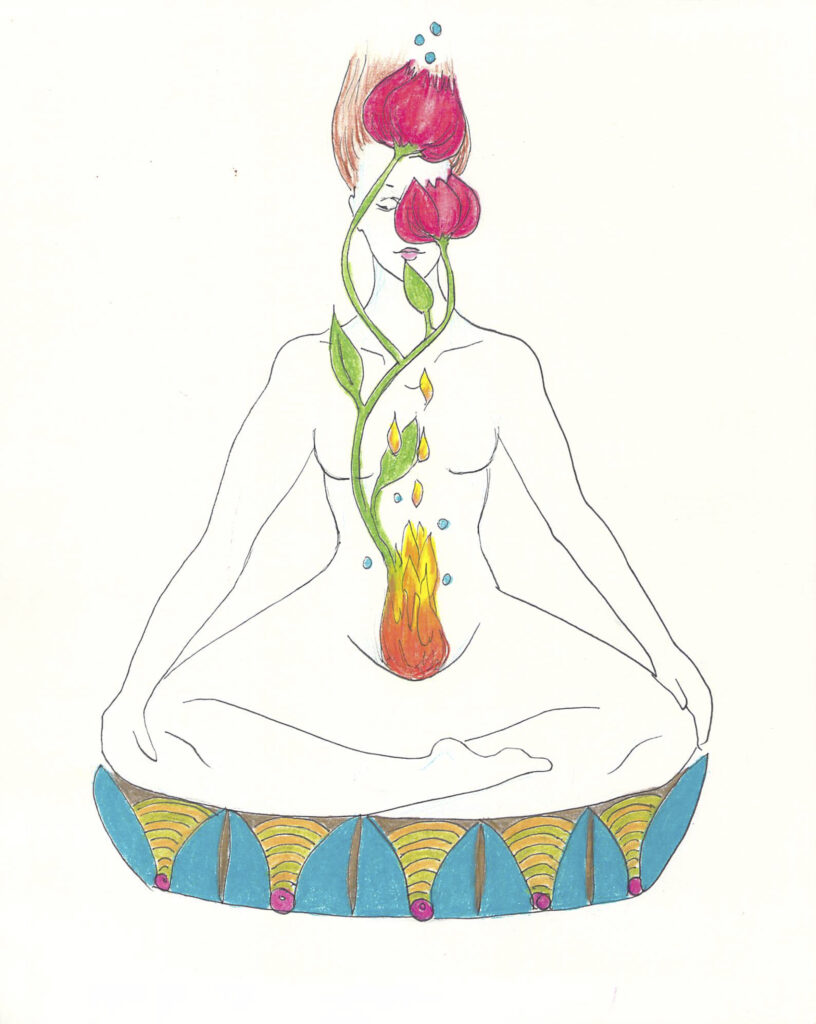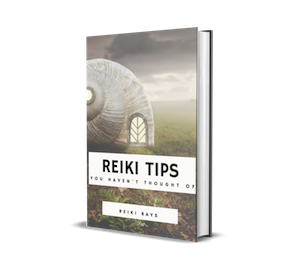Article by Nathalie Jaspar
When I learned Reiki, almost 15 years ago, I took a weekend course that included the first two levels. I loved it, but the following years made me realize that there was a lot more to Reiki practice than what my teacher was able to provide on that weekend. Here are five things I wish I had known from day one.
1. The need for self-practice
That first training was fun, emotional, and magical. But also all over the place, cramming information at warp speed and leaving out some fundamentals. For example, although we took the time to practice hands-on healing on others, we didn’t go over self-care protocol. We were just told to practice.
As a result, I focused mostly on offering sessions, which left me weirdly drained and emotional.
Another teacher pointed towards the importance of self-practice, and it changed my Reiki journey. I became more grounded and started to shed layers of anger and worry, and offer a brighter light to others.
2. The meditation side of Reiki
I went to many classes — most focused almost exclusively on hands-on healing. The only meditation we were taught was Gassho, and we probably did it for like… three minutes.
I still remember one teacher saying, I practice Reiki and meditation. She meant it as separate practices.
But Reiki is meditation. During hands-on healing, we need to be mindful, to be focused and fully present. On top of that, there are several specific Reiki meditations to stimulate and connect more deeply with energy. For example, Joshin Kokyu Ho (Purifying Breath), Seishin Toitsu, or meditating with the mantras and symbols. Even the Reiki precepts can be tools for contemplation.
Adding these meditations to your Reiki practice helps you experience the system beyond hands-on healing and take it to a deeper level: reconnecting with your true essence.

3. I am not doing the healing; I am holding the space for healing
I spent my first years trying so hard for people to feel better, blaming myself if they didn’t. My energy wasn’t “strong enough,” “I didn’t place my hands in the right places,” etc. Understanding that my job as a practitioner was to do my own work first in order to be able to be fully present during sessions, was a complete game-changer.
4. Reaching a plateau is ok
Sometimes our practice becomes blah for a bit. No significant insights, few sensations, just regular, old practice. And that is good! We are processing and integrating. It usually ends with a big aha (you only need patience). If it lasts, it may be a sign that it’s time to reach out to our teacher or mentor who can provide guidance to help us move forward. Which leads me to…
5. The need for mentoring and continuing education
When I did my certifications, I was told that that was all the training I needed. The rest was practice, practice, practice. The thing is that when you practice, that’s the moment questions pop up.
When I was researching to do my Reiki master, it hit me: Mikao Usui studied Japanese spiritual practices for decades and we expect to learn his system… in a couple of weekends? So I called my teacher and asked if she would provide long-term mentoring. She answered that it was not needed. That if I felt stuck, she would be happy to give me a chakra balancing session.
After taking Reiki level 3 training four times, attending many retreats, and training in Japan, I understand – she wasn’t able to provide mentoring because she literally didn’t know any more than what she taught in those two weekends.
Reiki practice seems simple. You get an attunement, learn a few techniques and voila, you’re done. But this simplicity is deceptive. There are many layers to the understanding of the system. We need to shift our mindset towards one of continuing education. Of questioning and contemplation of the practice. Of having a mentor and serving as a mentor.
Think about it; it happens in yoga, martial arts, and most practices. Why not Reiki?
If you just started your Reiki practice, I hope these five lessons I learned the hard way, help you have a smoother road towards a deeply fulfilling practice.
Free eBook download: We’ve created an eBook with our best articles on this topic, and offer it for free to all our newsletter subscribers.


Nathalie Jaspar
Nathalie Jaspar is a Reiki master with over 15 years of practice. Her mission is to deepen the understanding of Reiki practice in the world. She is a graduate teacher from the International House of Reiki, also trained with the Center for True Health, and the International Center for Reiki. To gain an even deeper understanding of Reiki practice, Nathalie went to Japan to practice Zen Buddhism at the Chokai-san International Zendo. Nathalie is the author of Reiki as a Spiritual Practice: an Illustrated Guide, and the Reiki Healing Handbook. She is the host of the Dive Into Reiki podcast and has been invited to demonstrate Reiki practice at venues such as Soho House, the New York Jet’s Athletic Center, and Fashion Week.
You can reach her via www.diveintoreiki.com, or https://www.facebook.com/Dive-Into-Reiki/





Spot on! Each one point resonates so much with me.
Very true, the practice is really simple on the surface but it has multiple layers of understanding which are often overlooked by many
I’ve felt like I needed more as well and I’ve also completed the masters level as well. I’ve been meditating and self reiki-ing at the same time and also I’ve taken up qigong to keep the connection with the life force. Great article.
This is brilliant! I believe one of the first steps we should learn is protecting our own energy. Being an empath I struggled with taking onboard the energies of my clients, to the point whereby one time I almost threw up during the session.
Thank you so much for bringing these points to light 🙏 🌟
Dear Karen
Thank you for reading this article and hope all the insights shared will help you develop your Reiki practice!
Many blessings 🙏